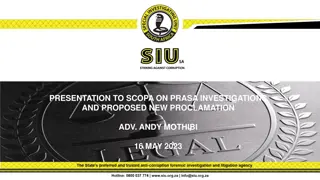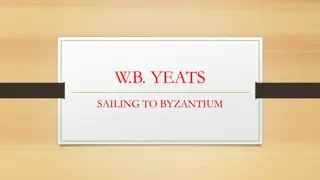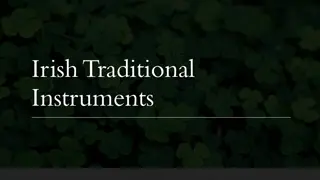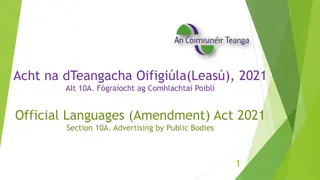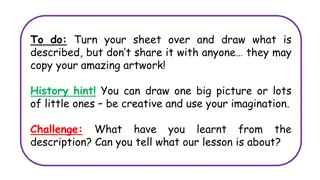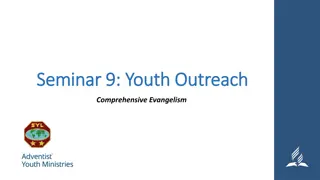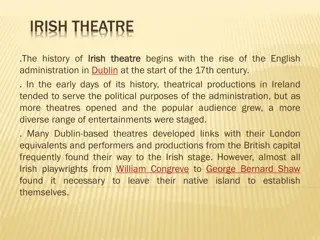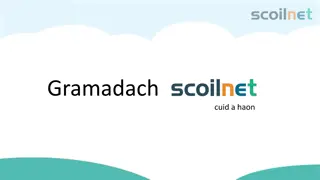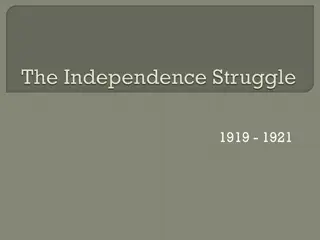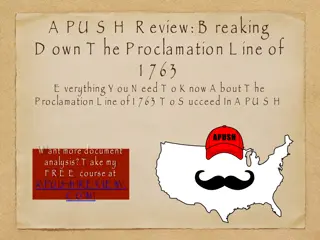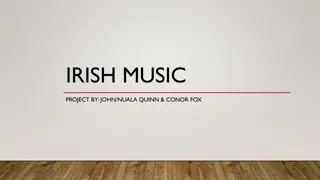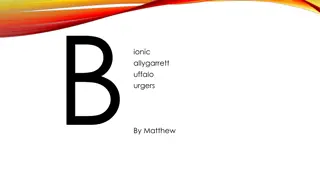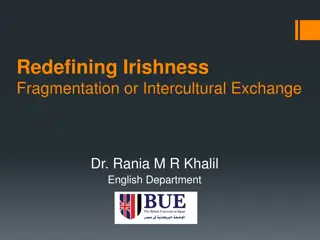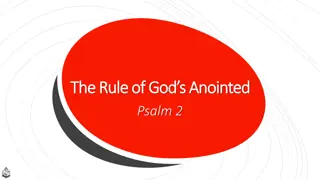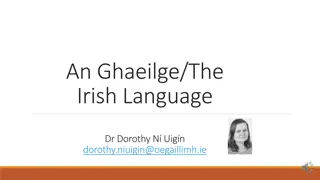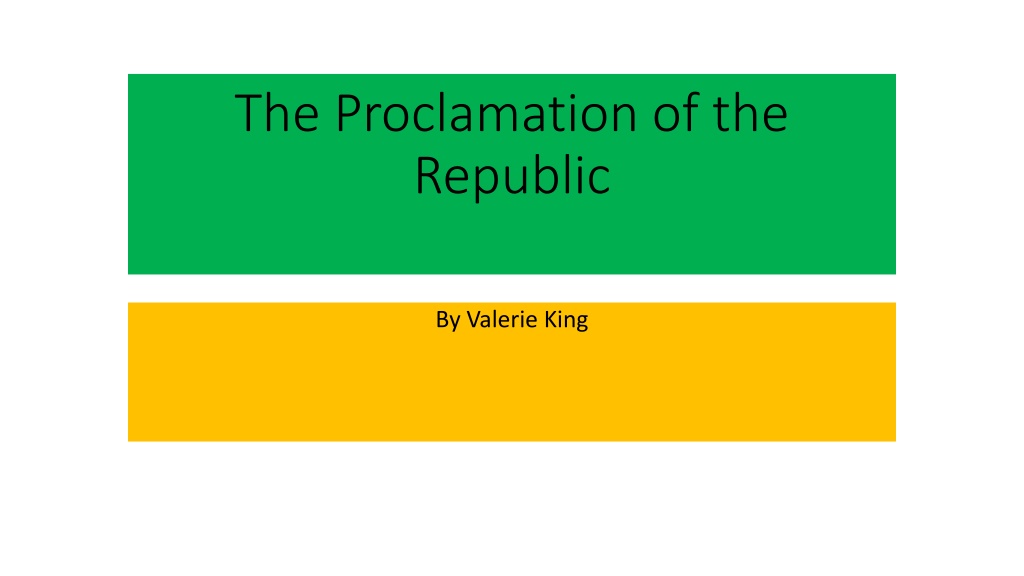
Irish Proclamation and Easter Rising History
Discover the significance of the Irish Proclamation signed by brave men including Patrick Pearse, and learn about the events of Easter Monday, 1916, when the Irish Republic was proclaimed amidst the Easter Rising in Dublin. Explore the history, signatories, and the courage of those who fought for a free Ireland.
Download Presentation

Please find below an Image/Link to download the presentation.
The content on the website is provided AS IS for your information and personal use only. It may not be sold, licensed, or shared on other websites without obtaining consent from the author. If you encounter any issues during the download, it is possible that the publisher has removed the file from their server.
You are allowed to download the files provided on this website for personal or commercial use, subject to the condition that they are used lawfully. All files are the property of their respective owners.
The content on the website is provided AS IS for your information and personal use only. It may not be sold, licensed, or shared on other websites without obtaining consent from the author.
E N D
Presentation Transcript
The Proclamation of the Republic By Valerie King
What was the Irish Proclamation? The Proclamation was a document created by Patrick Pearse and his friends in the Irish Republican Brotherhood. They stated their hopes and dreams for Ireland in this document.
What was the Irish Proclamation? The drafting of the Proclamation was one of the final steps taken by the Irish Republican Brotherhood Military Council who planned the Easter Rising.
The Irish Proclamation The seven signatories of the Irish Proclamation are Padraig Pearse, James Connolly, Thomas Clarke, Thomas MacDonagh, Sean MacDermott, Joseph Plunkett & Eamonn Ceannt All of the above men were executed by the British Government for their efforts in trying to secure a free Ireland! Easter Monday, April 24th, 1916, from the steps of the General Post Office ,Patrick Pearse read the Proclamation of the Republic.
What was the Irish Proclamation? By signing this document, the men were guaranteeing that they would face the firing squad should the insurrection fail. They were very brave.
The Irish Proclamation As arranged, at 12:45 on Easter Monday, Pearse accompanied by an armed guard stood on the step outside the GPO and read the Proclamation. Though the occasion was momentous, the crowd were not interested. There were a few cheers but no-one really cared.
Easter Monday On the 24th of April, Easter Monday 1916, about 2,000 Irish Volunteers and 200 from the Irish Citizen Army occupied the General Post Office (GPO) as well as other important buildings in Dublin city. They proclaimed the Irish Republic, read the Proclamation and raised the Irish flag for the first time.
Our Proclamation The Proclamation expressed the hopes and plans of the revolutionaries. Its purpose was to declare that an independent Irish Republic had been established and that a temporary government had been appointed - i.e. the seven members of the Council.
The Proclamation of Ireland Ireland s national right to freedom and sovereignty was powerfully asserted. Though a tiny minority, the rebels claimed: Ireland through us summons her children to her flag and could thus prove itself worthy of its august destiny . This appeal for support sprang from their conviction that they were acting in the country s best interests. They didn t have much support from the public however.
Our Proclamation The Easter Rising was not as successful as the IRB had hoped it would be. The proclamation was not received as well as they has hoped it would be by the public. The seven signatories were executed.

